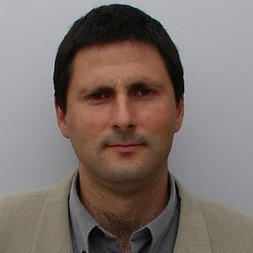Integration of Energy, Safety and Environmental Systems for a Sustainable Development
A special issue of Energies (ISSN 1996-1073). This special issue belongs to the section "B: Energy and Environment".
Deadline for manuscript submissions: closed (30 November 2021) | Viewed by 27622
Special Issue Editors
Interests: environmental management; renewable energy; life cycle assessment; sustainability
Special Issues, Collections and Topics in MDPI journals
Interests: environmental management; circular economy; sustainability
Special Issues, Collections and Topics in MDPI journals
Special Issue Information
Dear Colleagues,
One of the great challenges for our society, and future generations, is the achievement of sustainable development. Addressing this challenge involves complex interdisciplinary systems, for which the management of energy, safety and environmental systems and their interactions is key. The development of strong regulatory regimes is essential for sustainable development, especially in the current context wherein the COVID-19 pandemic greatly affects our work.
Therefore, this Special Issue focuses on innovative contributions in the management of energy, safety and environment systems and technological solutions for more efficient and sustainable processes. It is necessary to consider the adoption of innovative perspectives and methods in these fields. Contributions broadening the knowledge of environmental, energy and/or safety systems from transversal and integrative perspectives are welcome.
The editors of this Special Issue encourage authors to submit original research articles, in-depth reviews, well-documented case studies or theoretical papers, taking into consideration scientifically based discussions from different perspectives.
Prof. Dr. Beñat LandetaProf. Dr. German Arana
Guest Editors
Manuscript Submission Information
Manuscripts should be submitted online at www.mdpi.com by registering and logging in to this website. Once you are registered, click here to go to the submission form. Manuscripts can be submitted until the deadline. All submissions that pass pre-check are peer-reviewed. Accepted papers will be published continuously in the journal (as soon as accepted) and will be listed together on the special issue website. Research articles, review articles as well as short communications are invited. For planned papers, a title and short abstract (about 100 words) can be sent to the Editorial Office for announcement on this website.
Submitted manuscripts should not have been published previously, nor be under consideration for publication elsewhere (except conference proceedings papers). All manuscripts are thoroughly refereed through a single-blind peer-review process. A guide for authors and other relevant information for submission of manuscripts is available on the Instructions for Authors page. Energies is an international peer-reviewed open access semimonthly journal published by MDPI.
Please visit the Instructions for Authors page before submitting a manuscript. The Article Processing Charge (APC) for publication in this open access journal is 2600 CHF (Swiss Francs). Submitted papers should be well formatted and use good English. Authors may use MDPI's English editing service prior to publication or during author revisions.
Keywords
- Sustainability
- Sustainable development
- Circular economy
- Energy
- Energy generation
- Renewable energy
- Low carbon energy
- Safety
- Health
- Occupational health and safety
- Environment
- Environmental engineering
- Environmental management
- Life cycle assessment
- Management systems
- Integrated management systems
- System integration
- Climate change
- Climate mitigation
- Resource depletion
Benefits of Publishing in a Special Issue
- Ease of navigation: Grouping papers by topic helps scholars navigate broad scope journals more efficiently.
- Greater discoverability: Special Issues support the reach and impact of scientific research. Articles in Special Issues are more discoverable and cited more frequently.
- Expansion of research network: Special Issues facilitate connections among authors, fostering scientific collaborations.
- External promotion: Articles in Special Issues are often promoted through the journal's social media, increasing their visibility.
- e-Book format: Special Issues with more than 10 articles can be published as dedicated e-books, ensuring wide and rapid dissemination.
Further information on MDPI's Special Issue polices can be found here.






